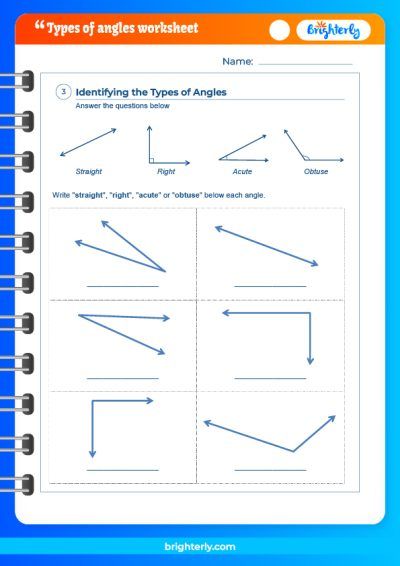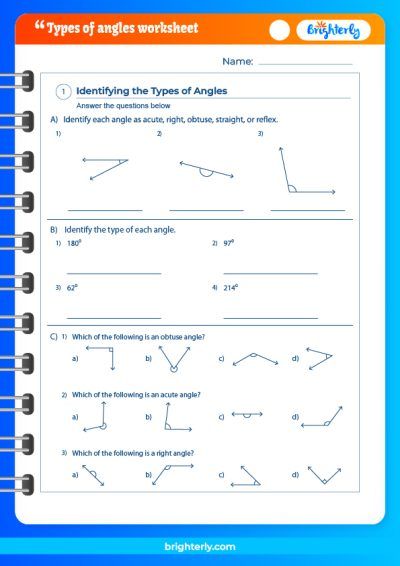Angle of Depression – Formula, Definition With Examples
Updated on January 5, 2024
Welcome to Brighterly, a comprehensive online math program for kids. Today, we’re focusing on a key concept in geometry: the angle of depression. This topic is not just a part of our math for kids curriculum but is also crucial for developing problem-solving skills. Understanding the angle of depression helps in various real-world applications, making it a fascinating and practical area of study in our math tutoring for kids.
What is Angle of Depression?
In geometry, the angle of depression is measured when an observer looks at a point below their horizontal line of sight. Here’s a straightforward explanation:
-
Observer’s Position: The observer is at a higher elevation than the point they are looking at. This could be someone standing at the top of a building, hill, or any elevated position.
-
Horizontal Line: Imagine a straight line extending outwards from the observer’s eyes, parallel to the ground. This is the horizontal reference line.
-
Line of Sight: This is a straight line from the observer’s eyes to the point of interest below them.
-
Angle of Depression: The angle of depression is the angle formed between the horizontal line and the line of sight. It is always measured downwards from the horizontal line.
This concept is particularly important in real-world applications like determining the height of an object or distance from a point when direct measurement is not feasible. In mathematical problems, it is often used alongside trigonometric ratios to calculate distances and heights.
Detailed Definition of Angle of Depression
When teaching math for kids, it’s important to explain concepts clearly. The angle of depression occurs when an observer looks down from a higher point to a lower point. For instance, if a child is looking down from the top of a slide to their friend below, the angle between their line of sight and the imaginary horizontal line from their eyes is the angle of depression. This concept is a cornerstone in Brighterly’s.
Formula for Calculating Angle of Depression
In our online math tutoring for kids, we emphasize the importance of formulas. The angle of depression can be calculated using the formula: Angle of Depression=(1/tan)*(Opposite Side/Adjacent Side)
This formula is crucial in trigonometry, a key part of our math program for kids, allowing them to calculate distances and heights in real-life situations.
Angle of Depression Vs Angle of Elevation
In geometry, it’s essential to distinguish between the angle of depression and the angle of elevation. These concepts are foundational in our math curriculum, especially for visualizing and solving real-world problems. Let’s clarify these terms:
-
Angle of Elevation: This angle is formed when you look up from a lower point to a higher point. For example, if you’re standing on the ground and looking up at the top of a building, the angle your line of sight makes with the horizontal line is the angle of elevation.
-
Angle of Depression: Conversely, the angle of depression occurs when you look down from a higher point to a lower point. If you’re at the top of the building looking down at a point on the ground, the angle between your line of sight and the horizontal line is the angle of depression.
Application of Angle of Depression in Triangles
Triangles, especially right-angled ones, are a mainstay in geometry and crucial in our math for kids program. The angle of depression helps in solving problems involving heights and distances. For instance, calculating the height of a tree from a certain distance can be solved using the angle of depression, a practical and engaging method in our online math program for kids.
Examples of Angle of Depression
Practice Questions on Angle of Depression:
-
From a 50-meter-high tower, if the angle of depression to a point on the ground is 30 degrees, find the distance from the base of the tower to that point.
Solution: Using the formula for the angle of depression, calculate the horizontal distance.
-
A bird is flying at a height of 150 meters, and the angle of depression to a fish in the water is 45 degrees. Determine the horizontal distance between the bird and the fish.
Solution: Apply the formula, using the height as the opposite side, to find the horizontal distance.
FAQs on Angle of Depression
How does understanding the angle of depression benefit kids in real life?
It helps in practical applications like determining the height of objects, which is a part of our math lessons for kids.
Why is the angle of depression important in Brighterly’s math program for kids?
It lays the foundation for understanding trigonometry and geometry, essential in our comprehensive math curriculum for kids.
Can the angle of depression be the same as the angle of elevation?
Yes, in cases where two observers are at different heights, their angles of depression and elevation can be congruent.
How does Brighterly make learning angles engaging for kids?
We use interactive tools, real-life examples, and clear explanations to make geometry fun and engaging in our online math tutor program for kids.






